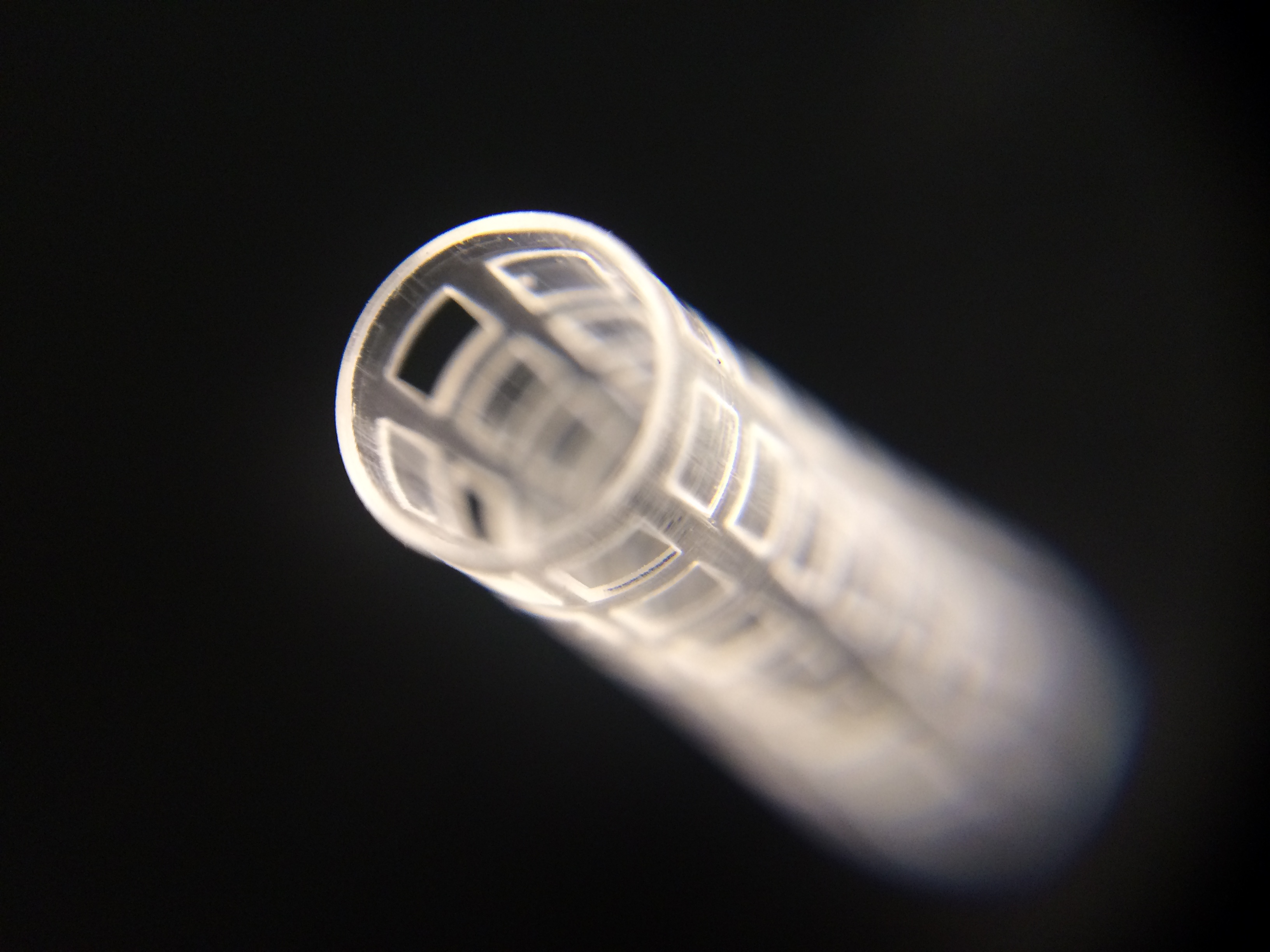High tech manufacturing often use polymers and their polyimide subset because they are mechanically stable, are good electrical insulators, and are inert. Consequently, polymer machining is fairly common in manufacturing processes. Polymers are often used as:
- Printed circuit boards (PCBs),
- Substrates for electronics or optical components,
- Electrical or thermal insulation tape, and
- Chemically-inert laminates.
Additionally, polyimides offer numerous benefits to manufacturers. They are inexpensive, flexible, and can support copper traces for wiring, which makes them popular in electronics. Flexible and miniaturized PCBs are routinely manufactured in multiple polyimide layers to support size reduction of mobile devices. Their non-reactivity also makes them of interest in the medical and food industries. In almost all cases, polymer machining, such as cutting and drilling is needed. That’s where laser machining comes into play.

Improving the Quality of Polymer Machining
Lasers are often used in polymer machining because of their capacity for high precision and detailed processes. Examples of such operations are micro drilling and high precision cutting.
Laser-initiated ablation is a method of polyimide/polymer machining that utilizes very short pulse durations with high peak power light pulses. This rapidly vaporizes material beneath the focused laser spot with high precision, and the short duration of the laser pulse inhibits heat from diffusing into the spot’s periphery.
Machining polyimides with lasers is of particular interest because these are thin materials that are easily damaged by heat, often noted at the edge of the laser cut. For example, it may cause short circuits in thin films or charring and burr formation at the edges.
Limitations of Polymer Machining with UV
A possible limitation of laser-based machining is that ablation is most efficient when the material absorbs the laser wavelength. This makes laser micromachining of transparent materials difficult and drives interest in the use of ultraviolet (UV) lasers for such applications. For example, excimer lasers with UV output have been used to machine polymers because absorption in the UV-range is higher. Unfortunately, UV machining also leaves a damaged machined edge, often referred to as the heat-affected-zone (HAZ).
Another possible limitation of UV based machining is the effects it has on the substrate. Polymers are formed by cross-linking and curing of polymer chains, often by using a UV light source. This is a complicated process that is based on a careful choice of resins, hardening agents, and UV light dose. However, the use of a UV light source to further machine polymers adds an intense dose of scattered light to the part that is being machined. This extra heavy dose of UV unfortunately may alter the stability and useful properties of these polymers.
Femtosecond Polymer Machining with IMRA
Femtosecond lasers eliminate HAZ, and any possible degradation of the component. The use of femtosecond pulses for machining is unique because such short pulses activate the optical absorption and subsequent breakdown of the material. This occurs even in the infrared, and ablates the material electrostatically without relying on thermal ablation.
Typical applications of femtosecond polymer machining and polyimide structuring include:
- Flexible, ultra-thin PCBs for miniaturized mobile devices
- Flexible solar cells
- Miniaturized hearing aids
- Panels for flexible organic light-emitting diode (OLED) displays
- Perforated filters for food and medical applications
IMRA is one of the world-leading specialists in laser-based polymer machining for microscale applications. Our high pulse energy femtosecond fiber laser, the DE1050 is uniquely suited for microscale polymer machining for a broad range of applications. If you would like to learn more about polymer machining on the microscale, we recommend our application note: Micromachining with the FCPA μJewel Femtosecond Fiber Laser. Or, if you have any specific questions, feel free to contact a member of the IMRA team today.


